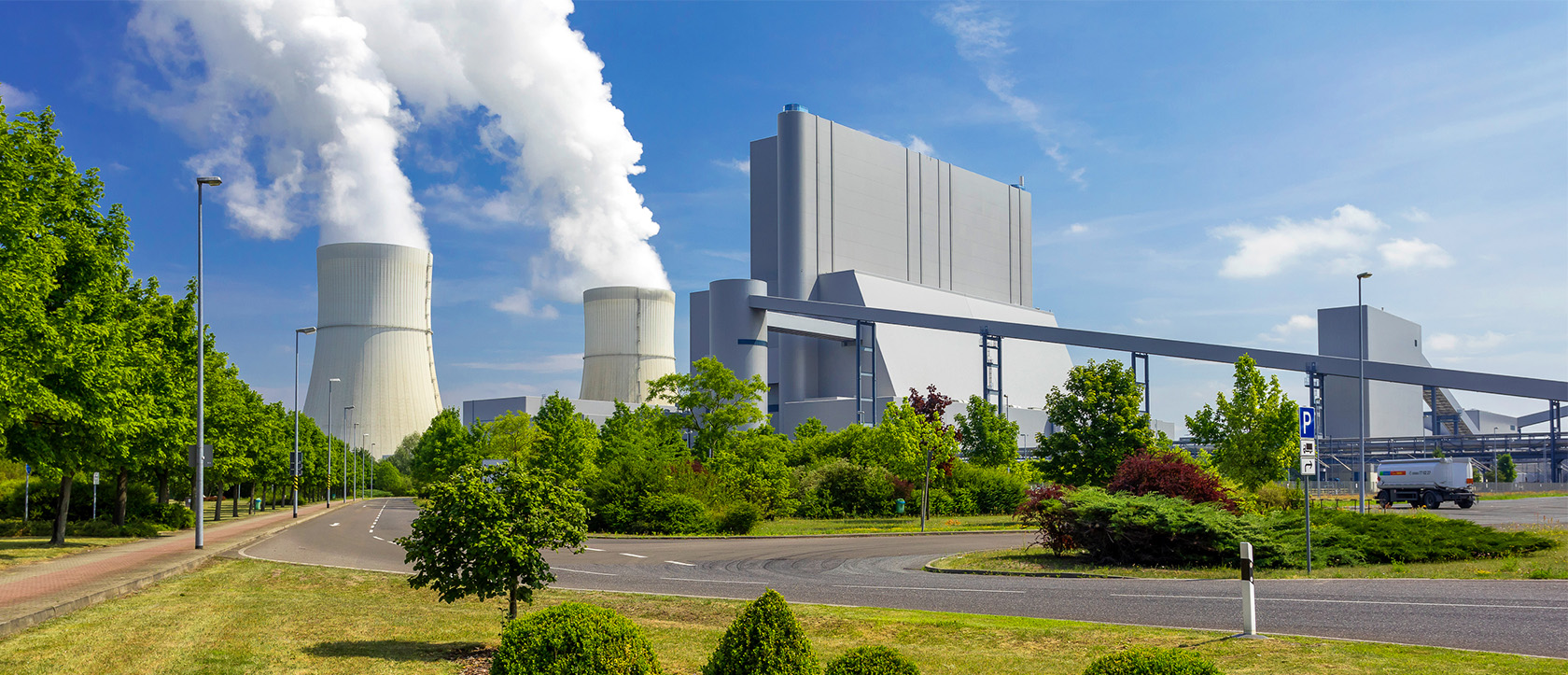Business field power plants
Energy sources such as coal and gas will remain important components of a reliable supply for the foreseeable future.
Our lignite-fired power plants supply electricity, district heating or process steam flexibly and in line with demand along the legally prescribed phase-out path for this form of energy generation. Our grid-serving gas-fired power plants ensure the stability of the electricity network. At the same time, we are expanding our portfolio. In addition to projects in the fields of renewable energies, battery storage and hydrogen, we are planning new, hydrogen-capable gas-fired power plants (H2 ready) to flank the energy transition.
LEAG's power plant portfolio
LEAG operates lignite-fired power plants near Leipzig and in the Lusatian mining region with an installed capacity of around 8,000 megawatts, 1,000 megawatts of which are part of the German supply reserve. The power plant sites are located in Jänschwalde, Schwarze Pumpe, Boxberg and Lippendorf. The fuel supply is ensured by opencast lignite mines in the regional vicinity of the power plant sites.
Our two gas turbine power plants Thyrow and Ahrensfelde near Berlin are part of Germany's capacity reserve and are only activated in the event of supply bottlenecks. Near Ulm in southern Germany, we operate the Leipheim gas-fired power plant for the transmission system operator Amprion, which also serves exclusively to stabilise the grid for an uninterrupted power supply.
The lignite-fired power plants
In purely mathematical terms, the electricity generated by our power plants is sufficient to a reliable and continuous supply of approximately 12 million households. With efficient cogeneration (CHP), they also deliver around three billion kilowatt hours of district heating per year. The supply of heat takes place in close vicinity to our sites for example in the Lusatian towns of Cottbus, Spremberg, Weißwasser and Hoyerswerda. Our third product is process steam available for industrial customers.
The electricity production of the lignite-fired power plants is adapted to the demand of electricity consumers and the currently available electricity generation from renewable energies (redispatch). In this way, they contribute flexibly to stable electricity grid operation and provide system services such as balancing energy and reactive power for the grid operators as well.
By the end of 2038 at the latest, coal-fired power generation in Germany is to be phased out by law. Following the decommissioning of power plants during the reunification period in the 1990s and extensive modernisation measures over the last 30 years, this accelerated phase-out is the lignite industry's final contribution to achieving Germany's climate targets. The phase-out path envisages that LEAG's 500 MW units will be gradually decommissioned, starting in 2025. This will initially affect two units in Jänschwalde, which are to be taken off the grid at the end of 2025 and the end of 2027 using a “prolonged decommissioning mechanism”, comparable to a security stand-by reserve. The Jänschwalde power plant will be completely decommissioned at the end of 2028. The two 500 MW units in Boxberg will follow at the end of 2029. The Lippendorf power plant is scheduled for decommissioning in 2035, Schwarze Pumpe and the remaining Boxberg units at the end of 2038.
| Power plant | Installed capacity | Electricity produced 2023 |
|---|---|---|
| Jänschwalde | 3,000 megawatts | 11.9 billion kWh |
| Schwarze Pumpe | 1,600 megawatts | 8.9 billion kWh |
| Boxberg | 2,575 megawatts | 12.2 billion kWh |
| Lippendorf (Block R) | 920 megawatts | 4.1 billion kWh |
Our gas-fired power plants
The German energy supply is undergoing a transformation from still mainly conventional generation to almost exclusive use of renewable sources. As a result of the nuclear and coal phase-out secure, weather-independent power plant capacities are gradually decreasing, while electricity demand is increasing due to digitisation, electromobility and power-to-X technologies (sector coupling). Gas-fired power plants will therefore remain an important bridging technology for supply security and stable operation of the electricity grid during the energy transition. As controllable and highly flexible plants, they can adapt their production to the electricity demand of consumers and the currently available electricity generation from renewable energies at any time. For electricity grid operators, our gas-fired power plants take over various functions to ensure stable grid operation and an uninterrupted power supply.
With our Thyrow and Ahrensfelde gas-fired power plants, we have already gained experience in operating grid-serving facilities. We are continuing along this path with our new Leipheim gas-fired power plant as a special grid technology resource (bnBm) in southern Germany. In the future, gas-fired power plants will become integrated, emission-reduced technology sites, for example with the gradual fuel switch to green hydrogen and the combination with renewable energies, electrolysis plants and storage technologies. We are pushing ahead with such projects to further enhance today's well-developed power plant sites, for example with our plans for hydrogen-capable gas-fired power plants in Schwarze Pumpe and Lippendorf and the Jänschwalde Innovative Storage Power Plant.
